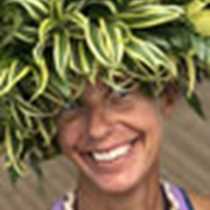Stunning, snow clad mountain landscapes breaking through thin layers of exquisitely beautiful clouds will be one of the strong memories I will hang onto from this trip. Today was no exception. At our first landing, early in the morning at Dorian Bay, the sun was shining bright and warm. The views out to Mount Francais on Anvers Island were as spectacular as anyone could hope for. Thin shrouds of cloud high on the mountain added to the majesty of our surroundings.
Dorian Bay was where my Antarctic adventure had begun back in 1975 when I landed here to start a two and a half year work contract with the British Antarctic Survey. I was one of a small team of young men who built the wooden hut that is positioned close to the beach in this sheltered bay. The hut has recently been declared a building of historic importance by the British government. The purpose of the building was to provide shelter for personnel waiting to be flown from the snow runway that is just above the hut, down to the science base on Adelaide Island, 150 miles to the south. Sea ice prevented the ships from going farther south for most of the summer, so a Twin Otter aircraft was used for transportation.
In addition to the hut, an extensive Gentoo penguin rookery is found on the rocky headland at Dorian Bay. We were able to walk freely amongst the penguins on hard-packed snow. From up on the old runway we were able to look down onto the old base of Port Lockroy on Goudier Island.
During lunch we travelled north to our planned afternoon landing at a place called Orne Harbour. On the way, we came across a large pack of type B killer whales in the Gerlache Strait. We were able to observe them for some time as they swam close to our ship. On reaching Orne Harbour we found the landing beach packed with sea ice that had recently blown in, making it impossible to land. Fortunately, just around the corner from there we found the landing on Danco Island to be clear. Some of us climbed to the top of the island to be rewarded with spectacular views of snow clad mountains and massive icebergs in the Errera Channel below. Some of us enjoyed Zodiac cruising amongst the icebergs where we found numerous Weddell seals resting on the rocky islands.
In the evening, after dinner, we found ourselves in Dallmann Bay watching any number of humpback whales feeding on swarms of krill. An expression used by some of our naturalists to describe the spectacle in front of us was “whale soup.” The bay seemed to be full of whales. Three humpback whales fed close to our ship, repeatedly diving, displaying their huge tails above the surface as they went down, soon to reappear with mouthfuls of krill and snorting strong fishy breath.










